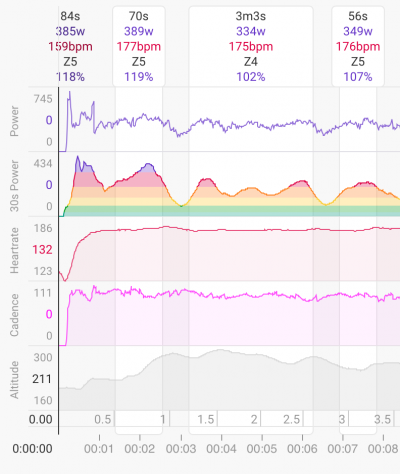
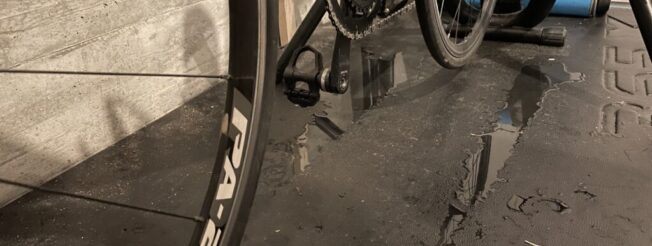
The Results are in – Was it Worth it??
Pre- Test Thoughts
Like yesterday, the repeat test is more just for my own curiosity and part of the ongoing experiment.
There were a couple of things that crossed my mind in how to execute it…should I just repeat exactly what I did in the first test Watt for Watt, or should I adjust the ramp rate to what my new FTP. It is likely to have changed slightly, but by how much, I don’t know. I didn’t want to wait to test and, also, I really fancied just doing the exact same protocol, at the same Watts and having that direct comparison…so that was what I did.
Comparing Results
I was pretty nervous as I made my way through the protocol. I was fairly confident I would see improvements, but I really wanted it to be clear!
I needn’t have worried…I couldn’t remember exact heart rates from the first test…but it was so much lower, you couldn’t miss it. Interestingly, the power from hitting 38 degrees to the end of the test was the same (195 Watts). However, the heart rate was 165 bpm in the first test and 150 bpm in the second…that’s pretty significant.
It was also pretty clear I was going to be able to keep above the 20% power loss for significantly longer, increasing from 14:51 in the first test up to a massive 41:50 in the second.
There’s no doubt I felt a lot more comfortable in recent training and in the second test. Though the physiological changes are apparent, there’s also a confidence that I can handle it, so even when I felt hot, there was no stress. For those racing in the heat, this confidence may be just as important as the added stress can be avoided.
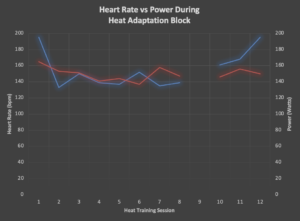
The graph above shows the average power (in blue) and the average heart rate (in red) in each session during the time in the heat training zone.
As you can see, there were a couple of sessions in the middle where I over-cooked it. One thing I learned, if I forced my core temperature higher quicker, then the resulting heart rate to power ratio was much worse (higher heart rate for less power). However, with a slower build up, the power is much higher relative to heart rate.
As you can see, I had one day off (really needed it!), then two more sessions and the re-test. There’s a definite pattern of improvement, but I’d be careful as the way you raise your core temp has a big influence on the subsequent power and heart rate.
In this test my core temp went up to 38.6 degrees and it wasn’t at all stressful in the way previous sessions would have been a quite a lot lower temperature.
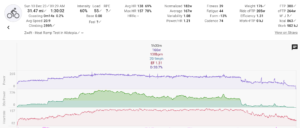
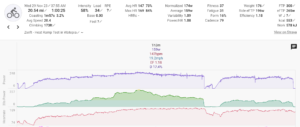
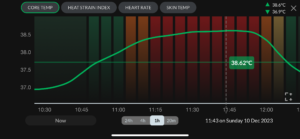

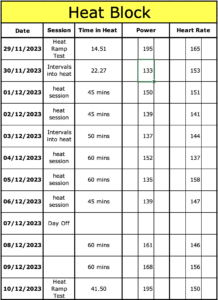
Performance Testing
As I can’t leave these sort of things alone, after I’d done the repeat heat ramp test and looked at the results I started thinking, what else could I do?
I hadn’t done a lactate test particularly recently, so there wasn’t much point in looking at that. But I had recently done a sub-max benchmark test and a set of critical power tests in the last few weeks…so that became the plan for the next day 🙂
The session looked like this:
- Easy Warm-Up
- Ramp from 100 Watts
- Increasing by 25 Watts every 3 minutes up to 275 Watts
- Pedal easy for 5 minutes
- 2 minutes all out
- 30 minutes easy spinning
- 5 minutes all out
- Cool Down
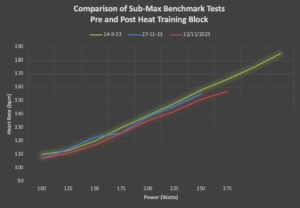

In the above raw data from the ramp test, I included a previous ramp test from when I was in decent shape and actually did a PB on a tough test ride I do that takes me around 3 hours.
There’s a pretty clear pattern of lower heart rate, it’s a small but pretty clear and consistent decrease in heart rate across the power ranges. This is good, but I was particularly interested in the performance side of things too.
Summary of the Results
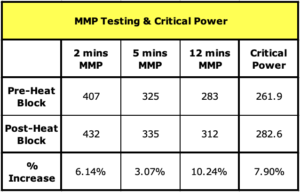
Critical Power Testing
As luck would have it, the week before the heat testing I was trying out some testing and did a 2 minute, 5 minute and 12 minute MMP (mean max power) test and looking at Critical Power. I used the High North Critical Power Tool on their website, which is a great resource and highly recommend.
Before the heat adaptation I did the 2 and 5 minute tests after the benchmark and the 12 minute test a few days later. So I did the same on the re-test.
Here are the results:
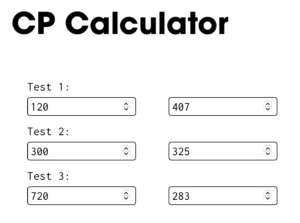
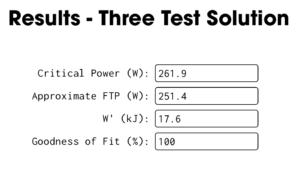
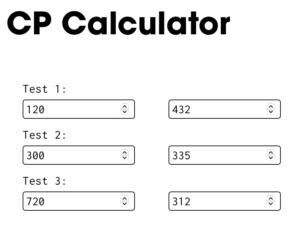
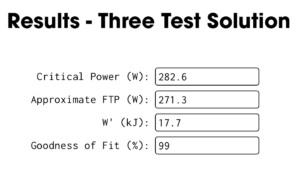

The pattern is clear, it’s a substantial improvement. The only hard sessions I’ve done in the last 2 months are the testing sessions. So these improvements don’t come from any threshold, VO2max or high volume training.
The next phase will be to see how the gains can be maintained over the next few weeks. The plan is to complete 3 heat sessions a week, which research shows maintain the gains, we shall see.
Summing it all Up
Well…it wasn’t always easy or enjoyable!! But I was more than happy with the results. Seeing the difference in heart rates at the different power levels was a real eye opener.
Bearing in mind that during the training block I did not train hard or do an intensity really. There was one session at the track where I was behind the motor bike for 15 minutes and that was pretty tasty for the last 3-4 minutes, but other than that it was tempo at most to get the core temp up, and then lowering the power and HR into Z1 (3-Zone Model).
Though the improvements in power/performance are great, the response in terms of comfort in the heat is also a real win. By the end of the block, not having the fans on didn’t bother me at all. I think it really is a no-brainer for athletes who have to try and perform in the heat. For the reduced stress alone it’s worth the effort invested.
It’s also important to note here that though it wasn’t an intense training block from the point of view of Watts or Heart Rate. But it’s definitely not for free!! It’s work from the logistical side, cleaning up the sweat, trying to stop all your kit stinking…but also, training in the heat is stress in and of itself, so that has to be taken into consideration. It’s definitely not a rest week when done like this.
The next step is also something to consider. Currently, I am not planning any more experiments. My current thought process is along these lines…if blood plasma is high currently, seems like a good opportunity to do some VO2max training. If my understanding is correct, the biggest driver of aerobic improvement is stroke volume…therefore a short block of VO2max training seems like a logical step. Will let you know how that goes 🙂

